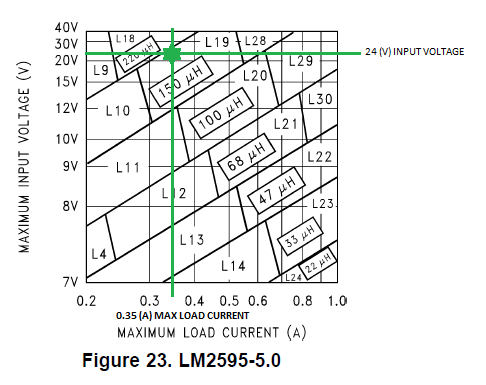Hello,
I have never used a switching voltage regulator before and I decided to try and design a circuit with the LM2595. I have a question about choosing the right inductor. The input is 24V, the output 5V, and my load can vary between about 20mA to 350mA. I don't care about board space or efficiency, but I do not want to have a lot of voltage ripple. What value of inductance do you think would be the safest bet, and also will I run into any regulation problems when the load current drops to a low value like 20mA?
Originally I thought I would design the circuit to handle a load of 1A just to be extra safe and go with the 100uH L29. However, after reading a little it sounds like this lower inductance will make the voltage ripple higher. So perhaps the 150uH L19 or L28 would be better. Would an even higher inductance like 220uH provide even less ripple if it was designed to handle the current?
Thank you so much for your help!
Hunter


